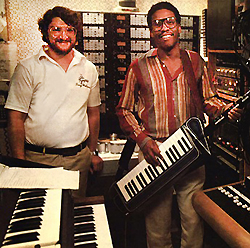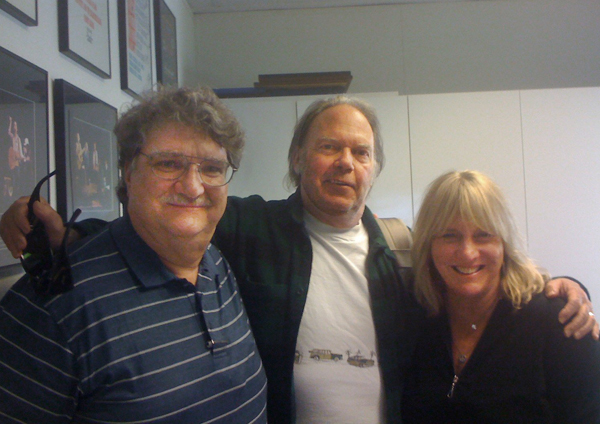
Touring with McLaughlin ended Bell’s marriage, but it allowed him to further explore his passion for invention (Leo Hoarty, Bob Easton and Bell developed McLaughlin’s first guitar synthesizer) and to deepen his knowledge of mixing live in a very challenging environment.
“Mahavishnu played a lot of unison lines,” he says. “The guitar, violin and keyboard players worked very hard to sound like each other so you didn’t always know who was playing what. The music was so complicated, the main thing was getting a good rhythm section balance and letting the band control the dynamic.”
Working with McLaughlin and, later, with Herbie Hancock, provided ample opportunity to innovate, but dampened any musical aspirations Bell still had. At that young age, he explains, he considered himself a highly skilled pianist, guitarist and composer.
But while engineering Mahavishnu, he decided his guitar chops weren’t in the same league as McLaughlin’s, and after working for Hancock, ditto his piano playing, and after working with Wayne Shorter, ditto again for his composition skills.
Instead, he focused on engineering and listening and found himself, with Hancock, in a situation where his technical skills complimented his employer’s musical prowess. “I met Herbie in 1975 when Mahavishnu opened for The Headhunters,” he recalls. “I’d just finished sound check and was told Mr. Hancock wanted to see me in his dressing room.
“I went downstairs, but he was chanting, so I loitered for a little while, then finally interrupted him and said, excuse me, Mr. Hancock, you sent for me? He replied, ‘who are you?’ I said I’m John’s sound engineer, Bryan. And he said, ‘that’s the best sound I’ve ever heard. If you ever need a job call me first.’ Then he went back to chanting.”
Perfect Matches
After finishing up with McLaughlin, and then between jobs, Bell dropped in on Hancock unannounced. “I knocked on his door at 9 am and said, hi, it’s Bryan, John McLaughlin’s sound engineer. You told me if I needed a job to call you first. But I got a blank stare – no recognition whatsoever. He just said, ‘I don’t remember.’”
That would have been the end of it but for the fact that Hancock owned a Ford Cobra and Bell loved cars. “I’d given up racing to mix and here’s one of the coolest cars in the world, so I asked for a ride,” he says. “Herbie said it wasn’t running, but I asked him if he had any tools. The fuel line had cracked at the connector, so I cut an inch off, slid it back on and the car started right up. Then he goes, ‘It’s coming back to me now. You can mix your ass off and you don’t mind fixing my car. Why don’t you stay for a couple of weeks?’” A couple of weeks became eight years, more than 20 of Hancock’s albums and numerous music technology firsts.
Hancock’s long-time recording engineer/producer, Fred Catero, who’d recorded everything from symphonies to Barbara Streisand, Frank Sinatra, Bob Dylan, Chicago, Blood Sweat Tears, Santana and Janis Joplin, became an important mentor to Bell. “Whenever we were in the studio, Fred was there. He taught me analog recording and I shared computer technology with him.”

